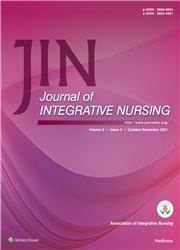Level of stress among nurses and their adopted coping strategies
Q4 Nursing
引用次数: 0
Abstract
Objectives: This study was aimed at identifying the nurse’s level of stress and the coping mechanism adopted by them. Materials and Methods: A descriptive study was done to assess the level of stress and the coping strategies adopted by the nurses in a secondary hospital in North East India, Nagaland. A total enumerative sampling technique was used to select 94 samples for the study. The Nursing stress scale (NSS) by Gray-Toft and Anderson 1981 was used to assess stress, and the Ways of Coping Questionnaire was used. Results: Of 94 samples, 68 (72.34%) had a mild level of stress, 25 (26.59%) had a moderate level of stress, and only 1 (0.06%) had a severe level of stress. Thirty-one (32.97%) used minimal coping strategies, and 63 (67.02%) used moderate coping strategies. There was no significant association between the stress level and selected demographic variables such as age, marital status, and years of experience (all P > 0.05). A significant association was found between the stresses of nurses and qualification of nurses (χ2 = 4.10, P = 0.04). Conclusion: The study reveals that most nurses had mild levels of stress. Most nurses use moderate coping strategies to relieve their stressors at work. Thus, there is a need to emphasize the importance of using effective coping strategies for nurses to alleviate their stresses and anxiety in their workplace and even in their personal lives.护士压力水平及其应对策略
目的:本研究旨在了解护士的压力水平及其应对机制。材料和方法:对印度东北部那加兰邦一家二级医院护士的压力水平和应对策略进行了描述性研究。采用全枚举抽样技术,选取94个样本进行研究。采用Gray-Toft和Anderson 1981年的护理压力量表(NSS)进行压力评估,并采用应对方式问卷。结果94份样本中,轻度应激68份(72.34%),中度应激25份(26.59%),重度应激1份(0.06%)。31人(32.97%)采用最小应对策略,63人(67.02%)采用中等应对策略。应激水平与年龄、婚姻状况、工作年限等人口学变量之间无显著相关性(P > 0.05)。护士压力与护士素质有显著相关(χ2 = 4.10, P = 0.04)。结论:本研究显示大多数护士有轻度的压力。大多数护士使用适度的应对策略来缓解工作中的压力源。因此,有必要强调使用有效的应对策略对护士的重要性,以减轻他们在工作场所甚至个人生活中的压力和焦虑。
本文章由计算机程序翻译,如有差异,请以英文原文为准。
求助全文
约1分钟内获得全文
求助全文
来源期刊

Journal of Integrative Nursing
Nursing-General Nursing
CiteScore
0.40
自引率
0.00%
发文量
3
审稿时长
17 weeks
 求助内容:
求助内容: 应助结果提醒方式:
应助结果提醒方式:


